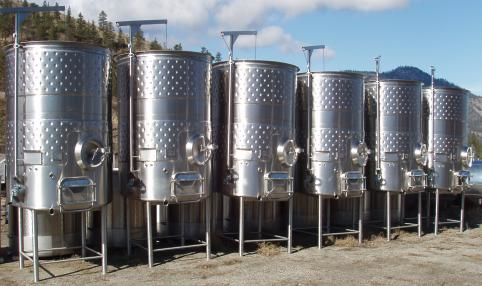Mutagens are biological, physical or chemical agents that change the genetic materials (inclusive of DNA and RNA molecules) of an organism and thus increase the frequency of mutations above the natural background level. They are substances that change the genetic information of an organism, usually by changing DNA.
Mutagens interact with nucleic acid molecules particularly the DNA to cause some alterations in them. The two major causes of mutations are physical (irradiation) mutagens and chemical mutagens. Physical mutagens or irradiation is exposure to radiation or ultraviolet (UV) light while chemical mutagens are chemicals that are capable of inducing mutation in a living organism.
Benzene, vinyl chloride, formaldehyde, dioxane, and acrylamide are some typical examples of chemical mutagens that induce mutation in a living organism. Some metals can also act as mutagens and thus cause mutation in living systems (Table 1).
Intercalating agents are mutagens that may insert between bases in DNA, causing frameshift mutation during DNA replication. Ethidium bromide (EtBr) is a typical example of an intercalating agent. Teratogens are other classes of mutagens – which are known to cause harm to the foetus or embryo during pregnancy. They cause birth defects while the mother shows no signs of toxicity.
Ethanol, mercury compounds, lead compounds, phenol, carbon disulfide, toluene and xylene are some examples of teratogens that can affect the foetus of a pregnant animal. Minimizing exposure to mutagens in both the environment and at workplace is critical to the prevention of induced mutagenesis or mutation in a host.
Mutagens cause changes to the DNA that can affect the transcription and replication of the DNA, which in severe cases can lead to cell death. The mutagen produces mutations in the DNA, and deleterious mutation can result in aberrant, impaired or loss of function for a particular gene, and accumulation of mutations may lead to cancer.
Mutagens may also modify the DNA sequence; and the changes in the nucleic acid sequences of an organism caused by mutations as aforementioned include substitution of nucleotide base-pairs, gene rearrangements and insertions and deletions of one or more nucleotide bases in the DNA sequences. Some mutagens can also change the number of chromosomes in the cell (a medical condition known as aneuploidy). A summary of the classification of mutagens is shown in Table 1.
Table 1. Types of mutagens
| PHYSICAL MUTAGENS | CHEMICAL MUTAGENS | BIOLOGICAL MUTAGENS | METALS |
| X-rays (ionizing radiation) | Reactive oxygen species (ROS) such as hydrogen peroxide and superoxide | Transposons (Transposons disrupt the functional elements of the gene when they are inserted into chromosomal DNA) | Arsenic |
| Gamma rays (ionizing radiation) | Deaminating agents such as nitrous acid | Viruses (Viruses disrupt genetic function when inserted into the genome of a cell) | Chromium |
| Alpha rays (ionizing radiation) | Alkylating agents such as nitrosamines and ethylnitrosourea | Bacteria (Some bacteria such as Helicobacter pylori cause inflammation during which oxidative species are produced, causing DNA damage and reducing efficiency of DNA repair systems, thereby increasing mutation) | Cadmium |
| Ultraviolet radiations | Aromatic amines and amides | Prions | Nickel |
| Radioactive decay | Alkaloids from plants | ||
| Cosmic rays | Bromine, benzene and sodium azide |
References
Bains W (1998). Biotechnology: From A to Z. 2nd ed. Oxford University Press, New York, USA.
Bourgaize D, Jewell T.R and Buiser R.G (1999). Biotechnology: Demystifying the Concepts. Pearson Education, San Francisco, CA.
Brian Robert Shmaefsky (2006). Biotechnology 101. Greenwood Publishing Group, Inc, USA. Pp. 1-273.
Bushell M.E (1998). Application of the principles of industrial microbiology to biotechnology (ed. Wiseman, A.) Chapman and Hall, New York. Pp. 5–43.
Byong H. Lee (2015). Fundamentals of Food Biotechnology. Second edition. Wiley-Blackwell, New Jersey, United States.
Chrispeels M.J and Sadava D.E (2002). Plants, Genes, and Crop Biotechnology. 2nd edition. Jones and Bartlett Publishers, Sudbury, MA.
Clark D.P and Pazdernik N (2010). Biotechnology. First edition. Elsevier Science and Technology Books, Amsterdam, Netherlands.
Das H.K (2010). Textbook of Biotechnology. Fourth edition. Wiley edition. Wiley India Pvt, Ltd, New Delhi, India.
Dictionary of Microbiology and Molecular Biology, 3rd Edition. Paul Singleton and Diana Sainsbury. 2006, John Wiley & Sons Ltd. Canada.
Glick B.R and Pasternak J.J (2003). Molecular Biotechnology: Principles and Applications of Recombinant DNA. ASM Press, Washington DC, USA.
Godbey W.T (2014). An Introduction to Biotechnology. First edition. Woodhead Publishing, Cambridge, United Kingdom.
Jee C and Shagufta (2007). Environmental Biotechnology. APH Publishing Corporation, Darya Ganj, New Delhi, India.
Lee S.Y, Lee D.Y and Kim T.Y (2005). Systems biotechnology for strain improvement. TRENDS in Biotechnology, 23(7):349-356.
Discover more from Microbiology Class
Subscribe to get the latest posts sent to your email.





